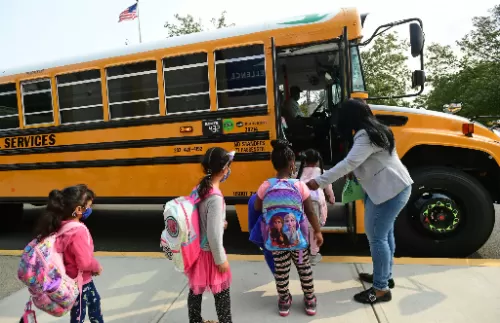The Future Is Virtual: How Online Teaching Is Redefining American Education
Online teaching was once a niche method of instruction—ideal for remote learners or supplemental education. But after the rapid pivot to digital classrooms during the pandemic, it has evolved into a central pillar of modern education. Whether in K–12, higher education, or professional development, online teaching is no longer the future—it’s the present. This transformation hasn’t just changed where learning happens, but how it happens, creating new opportunities and challenges for educators, students, and institutions alike.
Related searches

Flexibility for Teachers and Learners Alike
One of the most cited advantages of online teaching is flexibility. Instructors can create lessons from anywhere, while students can attend class on their own time, within a structured framework. This model benefits non-traditional students—working professionals, parents, or those living in rural areas—with greater access to education. For educators, online platforms enable innovative scheduling, hybrid models, and asynchronous tools that make it easier to tailor instruction to diverse learning styles. This flexibility has made online teaching an enduring option across grade levels and disciplines.
Digital Tools Are Reshaping the Teaching Experience
Modern online teaching is more than just Zoom calls. Today’s digital classrooms are powered by a growing ecosystem of educational technology: learning management systems (LMS), video modules, real-time quizzes, collaborative platforms like Google Workspace, and AI-powered grading tools. These tools help teachers track student progress, personalize feedback, and create more engaging content. However, effective use of technology requires training and intention. Teachers must balance innovation with usability to ensure tools enhance—not distract from—the learning process.
Challenges of Building Engagement in Virtual Spaces
While online learning offers many perks, it also comes with real challenges—especially when it comes to student engagement. Without the physical presence of a classroom, some students may feel isolated or unmotivated. Teachers must develop new strategies to build connection, such as frequent check-ins, discussion forums, and project-based collaboration. Fostering a sense of classroom community in a virtual space takes effort and creativity. Strong communication, routine structure, and inclusive participation are essential to keeping students active and accountable.
Equity, Access, and the Digital Divide
One of the biggest concerns surrounding online teaching is equitable access. Not all students have reliable internet, quiet workspaces, or access to up-to-date devices. The digital divide disproportionately affects students from low-income families, rural communities, and marginalized backgrounds. Educators and school districts must work to bridge these gaps through loaner devices, subsidized internet, and community partnerships. Online education holds immense promise—but only if equity is part of the equation from the start.
Online Teaching in Higher Ed and Lifelong Learning
Colleges and universities have embraced online teaching as a way to reach more learners, reduce overhead costs, and stay competitive. Entire online degree programs, including MBAs, education credentials, and technical certifications, are now standard offerings. Meanwhile, adult learners are turning to MOOCs (Massive Open Online Courses), professional certificates, and micro-credentials to upskill or pivot careers. In this environment, faculty must adapt traditional syllabi for online delivery, creating engaging, multimedia-rich lessons that fit the needs of independent learners.
Professional Development for Online Educators
Effective online teaching requires a unique set of skills—technological proficiency, virtual classroom management, and digital pedagogy. More schools and districts are investing in professional development specifically for online instruction. Workshops, webinars, and peer mentoring are helping teachers transition from in-person experts to digital facilitators. Organizations like ISTE (International Society for Technology in Education) and EdTech-focused universities offer certifications and best practices that empower educators to thrive in a virtual setting.
Conclusion
Online teaching is not just a response to a crisis—it’s a revolution in how we deliver and experience education. From virtual whiteboards to global classrooms, it’s clear that this modality is here to stay. While there are still hurdles to address—like student engagement and digital equity—the potential benefits are profound. With the right tools, training, and mindset, online teaching can offer an inclusive, flexible, and high-quality learning experience for students across America. The future of education is evolving, and it’s time we evolve with it.

Unpacking the Core of American Education: What Defines a High-Quality Curriculum

What Makes Schools Safe: A Holistic Look at Security, Belonging, and Preparedness

The Future Is Virtual: How Online Teaching Is Redefining American Education

5 Ways Schools Can Ease Student Anxiety

Digital Literacy Lessons for Elementary Students: Teaching Tomorrow’s Skills Today

Transforming Classrooms: How Educational IT Is Reshaping Learning in America








